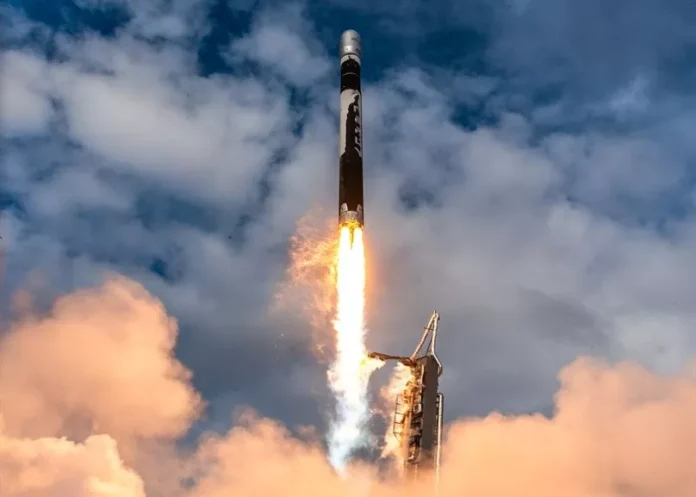A New Era for European Space Access
Europe is moving closer to developing its own independent satellite launch capability on the continent, marking a significant step toward reducing reliance on the United States. The Esrange Space Center, a state-owned facility in northern Sweden, has emerged as the frontrunner in this effort, with the first orbital launch projected as early as 2026.
The Swedish Space Corporation (SSC) has taken a bold step by signing an agreement with U.S.-based Firefly Aerospace to launch satellites from Esrange using the company’s Alpha rocket. The collaboration became possible after Sweden and the United States finalized a Technology Safeguards Agreement in June, granting the legal framework for American rockets to operate from Swedish territory.
Strategic Push for Space Autonomy

The push for European space independence has accelerated in recent years. Policymakers point to shifting U.S. policies, including the Trump administration’s “America First” approach, as a wake-up call for Europe’s space strategy.
Hermann Ludwig Moeller, director of the European Space Policy Institute, underlined the challenge ahead: “Europe, to be anywhere relevant in the next five to ten years, needs to at least double its investment in space.”
The numbers illustrate Europe’s lag. In 2024, the continent managed only three orbital launches. By comparison, the United States completed 154. This disparity has left Europe dependent on either NASA’s Cape Canaveral in Florida or its overseas spaceport in French Guiana, located in South America.
Geopolitical tensions have reinforced the urgency. Washington’s temporary suspension of satellite intelligence sharing with Ukraine exposed the vulnerability of Europe’s reliance on foreign-controlled space assets. Officials fear that similar restrictions could one day affect commercial or civilian space services, making the case for indigenous launch capabilities stronger than ever.
Esrange’s Northern Advantage

Located more than 120 miles north of the Arctic Circle, Esrange offers distinct benefits for orbital launches. Its latitude is ideal for placing satellites into polar and sun-synchronous orbits, which are essential for communications, navigation, and Earth observation missions.
The space center also boasts a 2,000-square-mile rocket landing zone across uninhabited tundra, providing a vast safety buffer for launch and recovery operations. Infrastructure at Launch Complex 3C is already in place, including tracking systems, security measures, and a modern control center.
Firefly’s Alpha rocket, capable of carrying over 1,000 kilograms to low Earth orbit, is expected to be the workhorse for the first launches from Esrange. This vehicle will serve both government and commercial customers seeking reliable access to space from European soil.
Rising Competition Across Europe
Sweden is not alone in its ambitions. Other European nations are moving swiftly to develop their own launch sites, creating a competitive landscape.
In March 2024, Norway’s Andøya Spaceport made history when German company Isar Aerospace conducted Europe’s first orbital launch attempt from continental soil using its Spectrum rocket. Although the mission ended in failure after just 30 seconds, it marked a milestone for Europe’s space aspirations.
Meanwhile, Portugal, Spain, Italy, Germany, and the United Kingdom are all investing in their own spaceport infrastructure. The European Commission is supporting this momentum with the proposed EU Space Act, introduced in June. The legislation seeks to streamline Europe’s fragmented regulatory environment by harmonizing the 13 different national space laws that currently govern launch operations.
The act prioritizes safety, sustainability, and resilience while aiming to lower costs for companies operating across borders. By establishing a unified framework, European officials hope to accelerate investment and make the region more competitive in the booming global space economy.
Economic and Security Drivers
The surge in spaceport activity reflects both economic opportunity and strategic necessity. In 2024 alone, European space companies secured €1.5 billion in investments. Notably, around 40 percent of the funded firms had direct links to security applications, underscoring how closely space technology is tied to defense and resilience.
Space assets today underpin everything from GPS navigation and communications networks to weather monitoring and military intelligence. As geopolitical tensions rise, Europe’s ability to independently launch and operate satellites has become a cornerstone of its security strategy.
Looking Toward 2026
If all goes according to plan, Esrange’s first orbital launch in 2026 will mark the start of a new chapter in European space history. For decades, Europe has relied on a limited number of overseas facilities and foreign partnerships to access orbit. Now, with growing investment, new legislation, and international collaboration, the continent is positioning itself to become a competitive force in the global launch market.
Sweden’s Arctic launch site could serve as the gateway to that future, offering Europe not only technological independence but also greater resilience in an increasingly contested and commercialized space domain.
Sources: AP News

